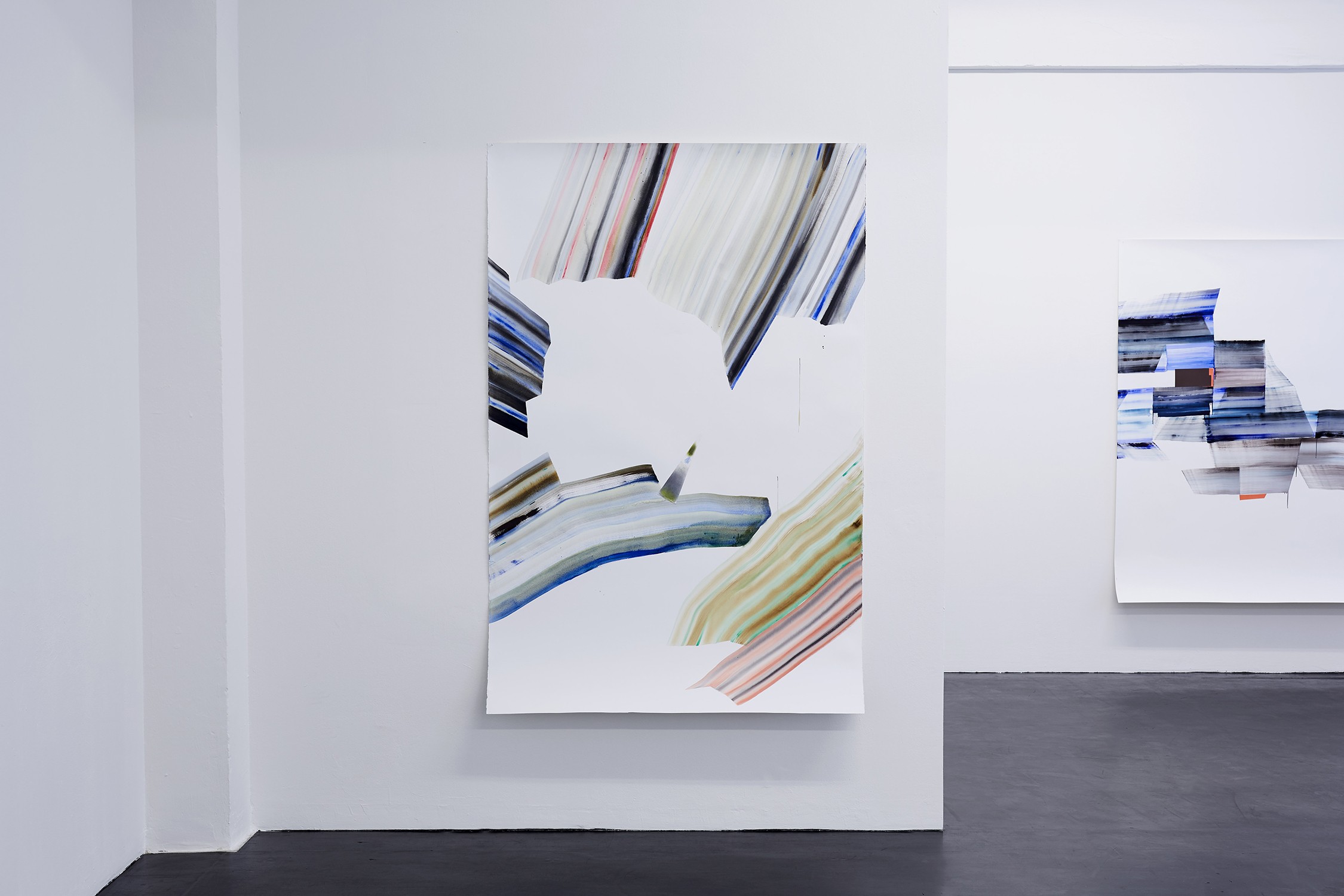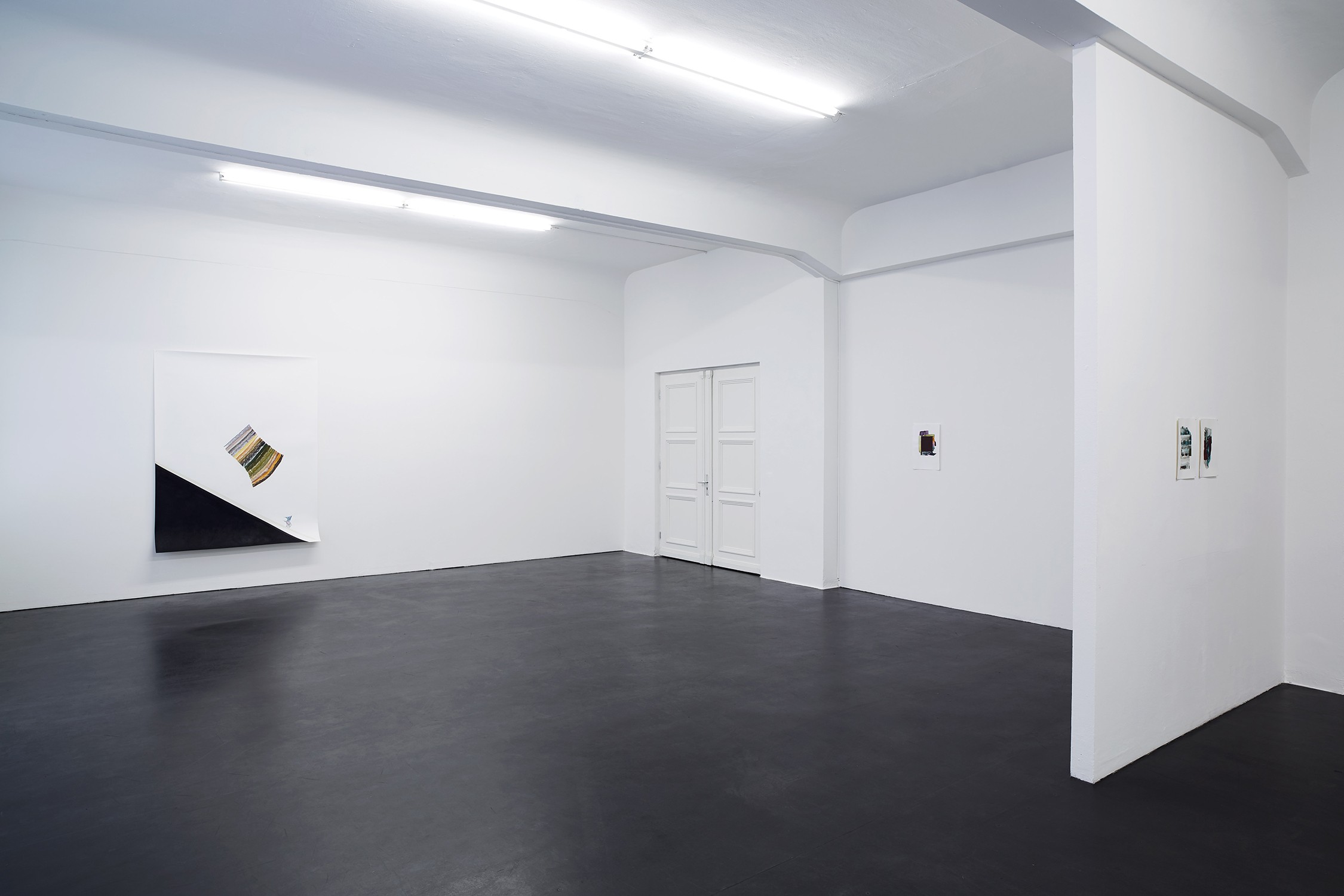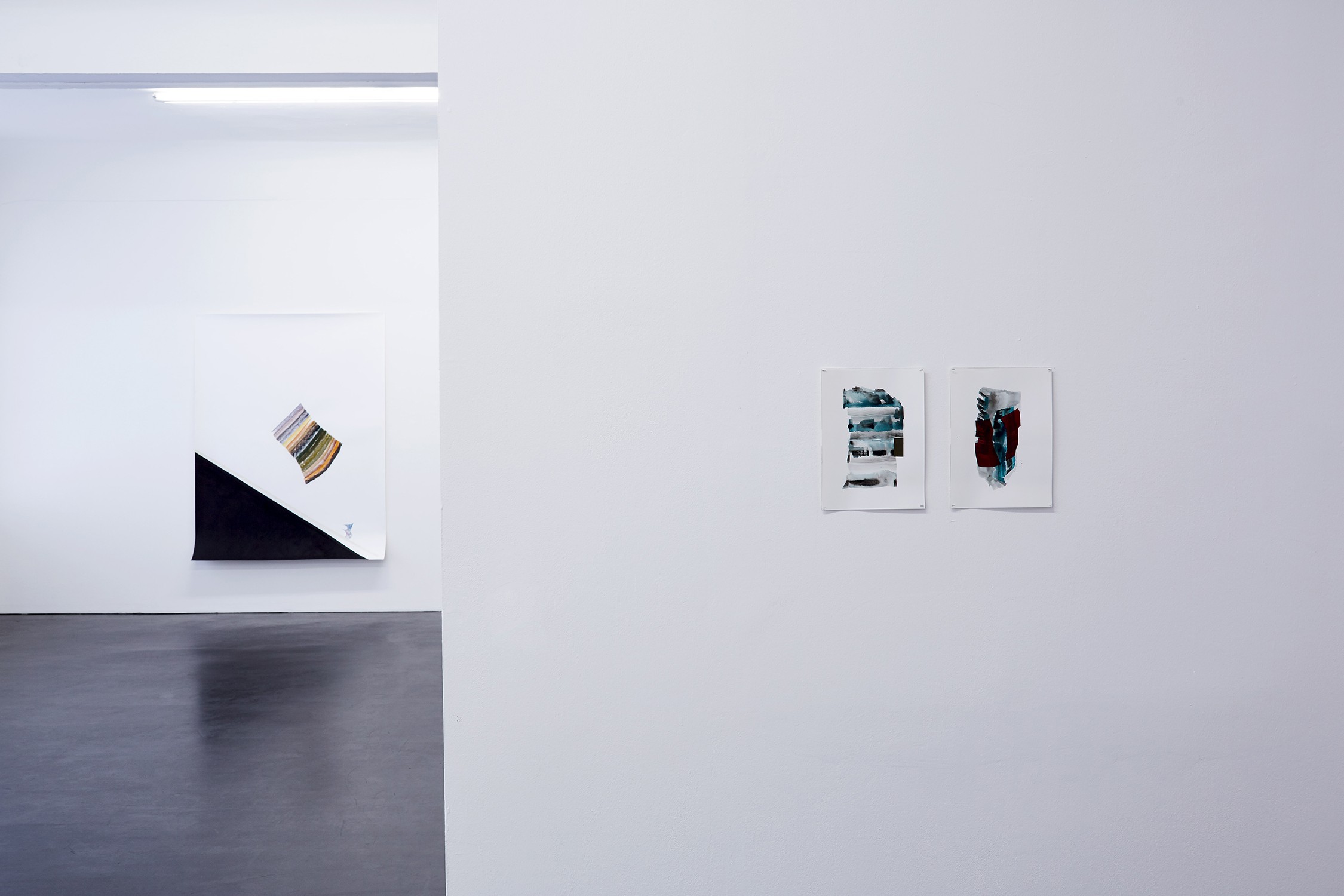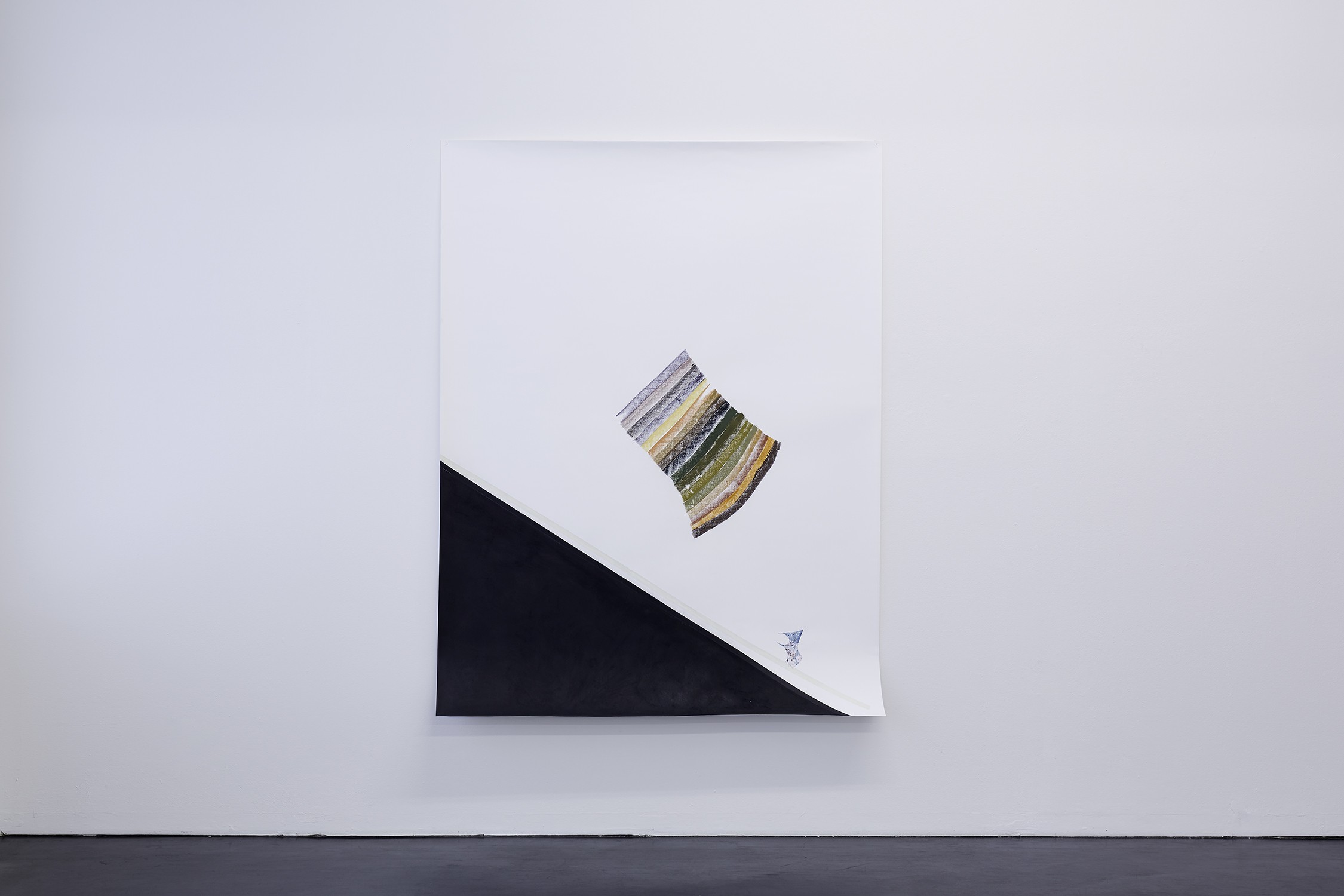






Permanent and timeless, the painting progressing, slow and far from space and time, but in constant movement, barely perceptible, breathing, lingering. It is not easy to look at painting, its permanence and substance generates a space conducive to reflection. The more we look, the more we see, and the painting allows us a marvelous form of concentration, allowing thought and gaze to combine in a complex exercise of experiences where innumerable mechanisms concur, in our mind, our imagination and our body.
Vicky Uslé
Gallery alexander levy is pleased to present Open Shear with new works by Vicky Uslé from November 25, 2017 until January 27, 2018.
Vicky Uslé uses her environment as a source of inspiration for her paintings. Through an iridescent characteristic arrangement of hard edges and soft curves, she explores the contrast between nature and urban space that she encounters in New York and in the countryside in Spain, the two places she lives. The abstract forms in Vicky Uslé’s paintings are an expression of her perception, experiences and reflections. Vicky Uslé explores the possibilities of abstraction by overlaying brushstrokes, shapes, colors and perspectives. Her works have a certain tension between organic and geometric, intensity and fragility. The soft, distinct brushstrokes emerge in a spontaneous gesture, whereas the sharp- edged, saturated forms are constructed before painting. Uslé uses stencils and arranges them to find the perfext place where the two different forms connect. This process has in its approach similarities to a collage.
Vicky Uslé chose the title Open Shear for the exhibition: Shear means the relation of a blade or blades, of cutting, of going through or across, example of removing of hair, letting go or break loose from past, and move into present, to renew. Open is representing all possibilities.
In her current works, she uses collage techniques. Uslé attaches painted papers to the works, that adapt the visual language like a chameleon. The observer still notices that something is wrong, that something has been added, that it fits in, and at the same time doesn’t. Uslé thus dissects the temporal, spatial and material constitutions of the scene through overlays and shifts.